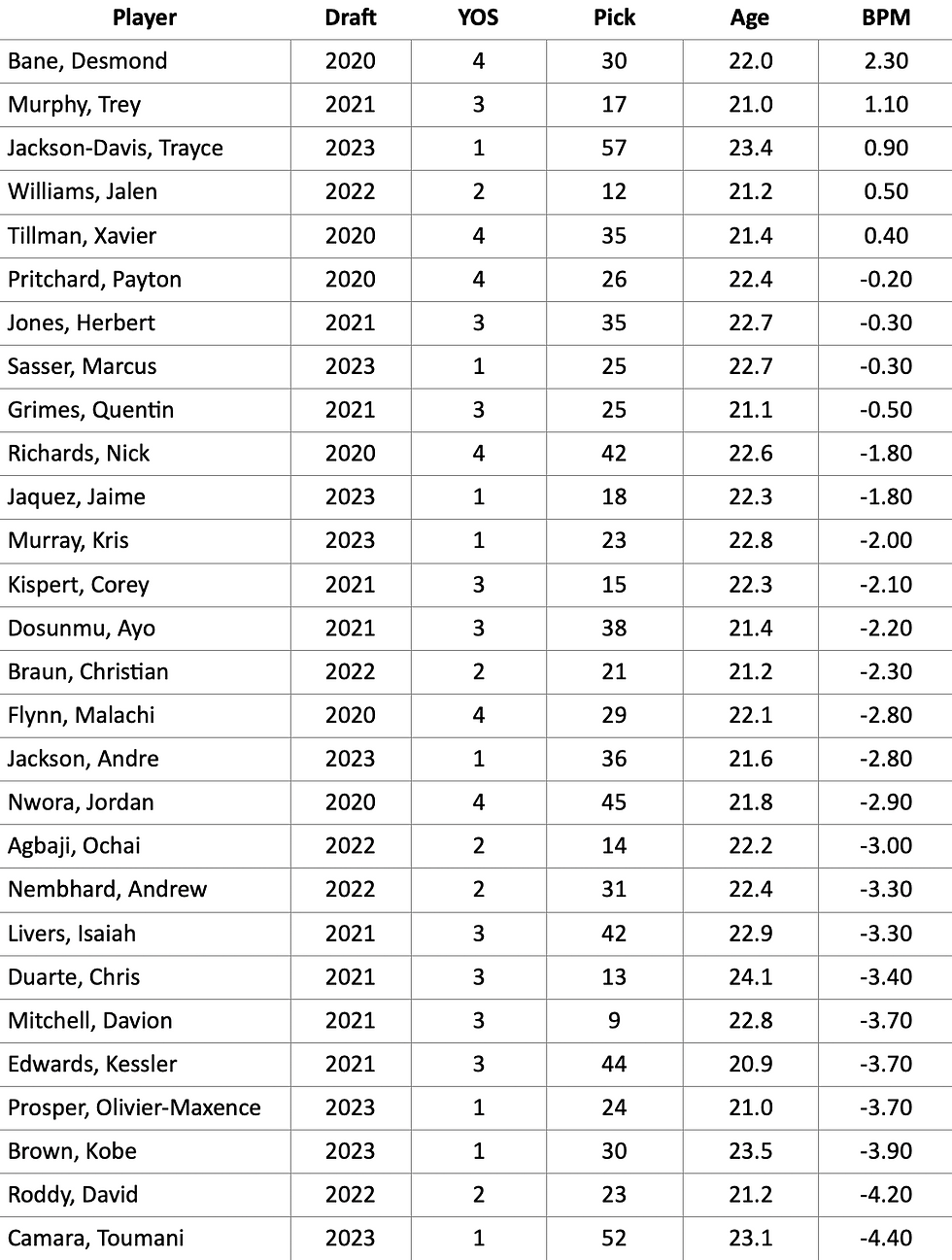P.I. Confidential: Chapter 4
- Pro Insight

- Jan 11, 2024
- 3 min read
Updated: Sep 28

In the latest edition of P.I. Pulse, we continue our new column, 'P.I. Confidential.' Penned by an anonymous NBA scout with a decade of experience within multiple pro front offices, the idea with this endeavor is to provide them a platform to pull back the curtain and openly discuss scouting philosophies, procedures, processes, and of course, prospects:
The NBA draft is an extremely hard endeavor, especially when you are evaluating 18-year-olds and projecting what they may look like in five years.
In this chapter, I wanted to look at the past four years of upperclassmen drafted (juniors and older) to see if we can find some common traits and then use that to project who may match the criteria in the 2024 draft.
In the past four drafts, there have been a total of 61 upperclassmen taken. This accounts for 26% of all players selected.
Breaking it down further, I wanted to look at players who have played at least 500 minutes on average per season (I used 200 total minutes for the 2023 draft) and we arrived at 28 total players. Broken down by position we have three centers, five forwards, seven guards and 13 wings. Here is that list, sorted by BPM. On average, we can expect seven upperclassmen to get an opportunity to crack an NBA rotation every season.

Looking at this list, three categories of players stand out:
Shooters: Elite shot-makers, showcased by their percentages matched with large usage and sample size over three or more college seasons.
Versatile Defenders: Likely will have ++measurements, steal, block and rebound %’s, while showcasing defensive versatility, NBA size and athleticism.
Connectors/Playmakers: Players who could become elite role players who demonstrate high IQ, found via AST%, AST/TO and team success.
Shooters
When dealing with small samples, NBA front offices will often look at FT% and 3PAr, with the thought being FT% is a more stable sign of shooting skill and 3PAr is a good indicator of your shooting DNA; if you are shooting a lot of 3s, you are most likely able to make them. With juniors and seniors, the sample size increases, with many of these players shooting 500+ threes across their college career.
Looking at our above list, here is our breakdown when we look at career 40% 3PA rate, 75% Free Throw, and 35% 3PT:

Using these shooting standards gives us a good sample of upperclassmen to choose from. Once we get our list, we can look at secondary and tertiary traits that translate to the NBA: NBA size and athleticism, IQ, passing and creation ability, rebounding, etc. Here are some of the names that stand out:

Versatile Defenders
When looking at upperclassmen who have differentiated themselves on the defensive end, we usually find a mix of NBA size and athleticism, +wingspan (at least +4”) and a good deal of indicators that include steal, block and defensive rebounding rates. These advanced statistics alone don’t always equate to becoming a great defender, per se, but when matched up with the eye test the goal is to identify high IQ players who are capable of guarding multiple positions and possess quick processing ability.

Names that match the criteria that I am specifically interested in for this draft:

Connectors/Playmakers

Oftentimes with these connectors we see them touching multiple categories: defense AND secondary playmaking, shooting AND secondary playmaking, etc. The interesting thing about this list is that outside of Andre, all of them had very high-level shooting splits in college — meaning if you have IQ and shooting, your chances of making it become exceptionally higher.
Here are some of the upperclassman that stand out in this draft:

Thanks for checking in! Leave me some feedback @_piconfidential and tell me where I’m wrong and who I need to watch further.
In Chapter 5, we will dive into the NBA rookies and see what we can glean from the first few months of the NBA season.
Until next time!
In case you missed our first few chapters, see below:
Chapter 3: 2022 Redraft
Chapter 2: 2024 Composite Mock Analysis
Chapter 1: Introduction

![P.I. [Euro] Pulse: Germany's Youth Basketball Landscape](https://static.wixstatic.com/media/a4b01a_d4782402d177429280c11247c0c63184~mv2.jpg/v1/fill/w_980,h_551,al_c,q_85,usm_0.66_1.00_0.01,enc_avif,quality_auto/a4b01a_d4782402d177429280c11247c0c63184~mv2.jpg)

